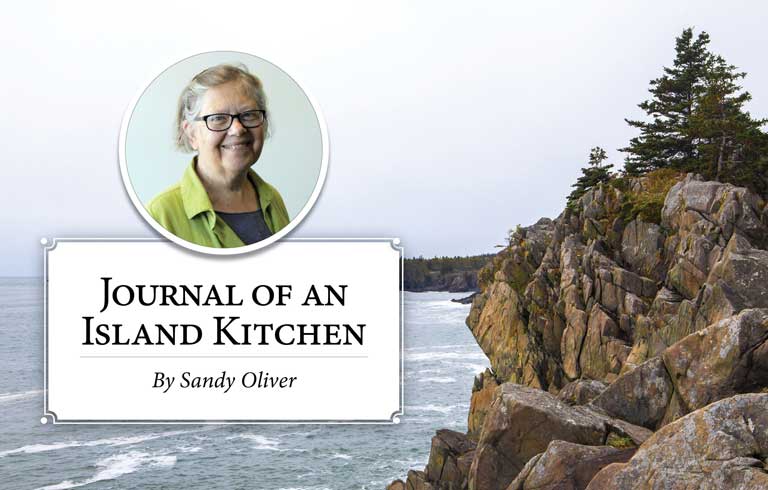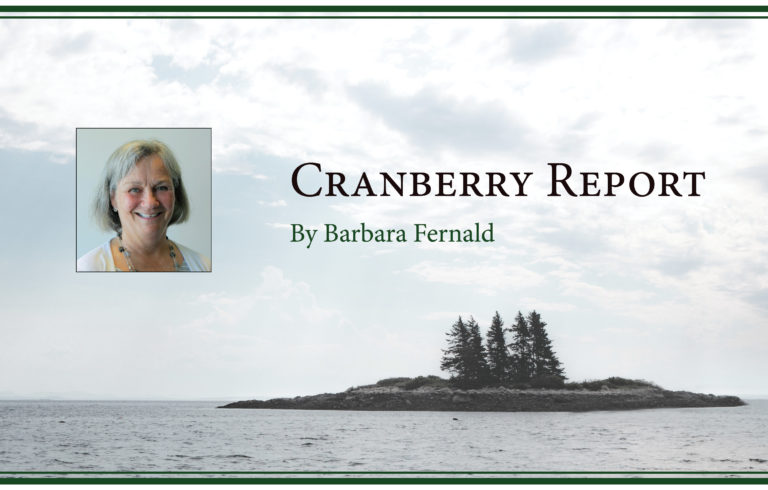Chowder season begins and ends simultaneously in Maine. Maybe on a few over-warm days in July and early August it doesn’t taste as good as it does on chilly September nights. Most traditional Maine eateries keep it on the menu all the time. For people truly from Maine, it’s a birthright dish.
A reader contacted me from South Portland and set me thinking about chowder when she wrote, seeking confirmation about it.
“I love clam chowder, but I don’t love clam pudding. I seethe when I read ‘Maine’ or ‘authentic Maine’ or ‘Downeast’ clam chowder. I don’t think ‘Downeast’ Mainers made their chowders thick as puddings.”
They didn’t. Chowders ought to be thick alright but with ingredients surrounded by broth. None of this adding thickeners business, even if lots of folks think that chowder is supposed to be a bit gluey.
Named, in French, chaudiere for the pot it was cooked in, chowder ingredients consisted of sea-going provisions
In all likelihood chowder was the first dish cooked in Maine by Europeans who, prior to colonization, came here to set up fishing camps where freshly-caught cod salted at sea were dried off before fishermen returned home.
Named, in French, chaudiere for the pot it was cooked in, chowder ingredients consisted of sea-going provisions—salt pork, hard tack or sea biscuit, and water, to which fishermen added what they caught but didn’t salt, probably cod sounds—the swim bladder—and heads and shoulders which were removed to make the fish lie flat after drying.
When chowder came to be cooked ashore in colonial kitchens, the basic dish continued with salt pork, hard biscuit, and water. After potatoes, a New World food carried to Europe, were re-introduced to North America by Scotch-Irish settlers in the early 1700s, cooks used them sometimes in addition to hard bread; and onions were added. No milk appears in chowder until the 19th century, appearing early in chowder for invalids, then gradually becoming commonplace.
Here’s the wrinkle on that. Milk-less chowders survived to recent time in some localities. When I moved to southeastern Connecticut in 1969, I found a plain broth chowder called Stonington chowder or Rhode Island chowder which I liked very much, whether it was clam or fish. Usually it was made with clams. whether it was clam or fish. Years later when I began to explore food history, I recognized that Rhode Island chowder is the early form of chowder.
Along the way, I befriended an older woman from New London whose father was the family chowder master in the 1920s. He arranged for milk as an optional ingredient by putting it on the table in a pitcher to be added, or not, to taste.
His favorite chowder was a clam one, made with fat salt pork, onions, potatoes, and clams. Pilot crackers, instead of being incorporated in the chowder, were served at table to be added to the diner’s taste. Thick with ingredients, and brothy. No thickeners.
Apparently somewhere along the Maine coast one can find a milk-less version of chowder. I heard about this at the Milbridge Historical Society but I do not know where it still exists. I keep hoping someone will tell me.
One of the best things I ever learned about chowder making was using evaporated milk. I picked that up here on island and stuck to it. Evap is a bit richer, so the chowder is still brothy but creamy. For heaven’s sakes, don’t use evaporated skim milk.
Remember the kerfuffle over the Crown Pilot crackers a few years ago? Nabisco quit making Crown Pilot Crackers, the higher quality cousin of hardtack, and a classic ingredient for addition to Maine chowder. Why quit? They were profitable but not profitable enough for wonks setting company profit margins.
What could they have done? One of the Nabisco guys said that if they could package the Crown Pilots for use in restaurants, like the little bags of oyster crackers you get with your order of soup, then maybe they would have kept the pilot crackers on the shelf.
The box that Crown Pilots were packaged in showed a bowl of chowder into which a corner of cracker was inserted looking for all the world like a shark fin sticking up out of what was surely pudding-style chowder.
O tempora, o mores!
Sandy Oliver is a food historian who lives, gardens, cooks, and writes on Islesboro. She may be contacted at SandyOliver47@gmail.com.





